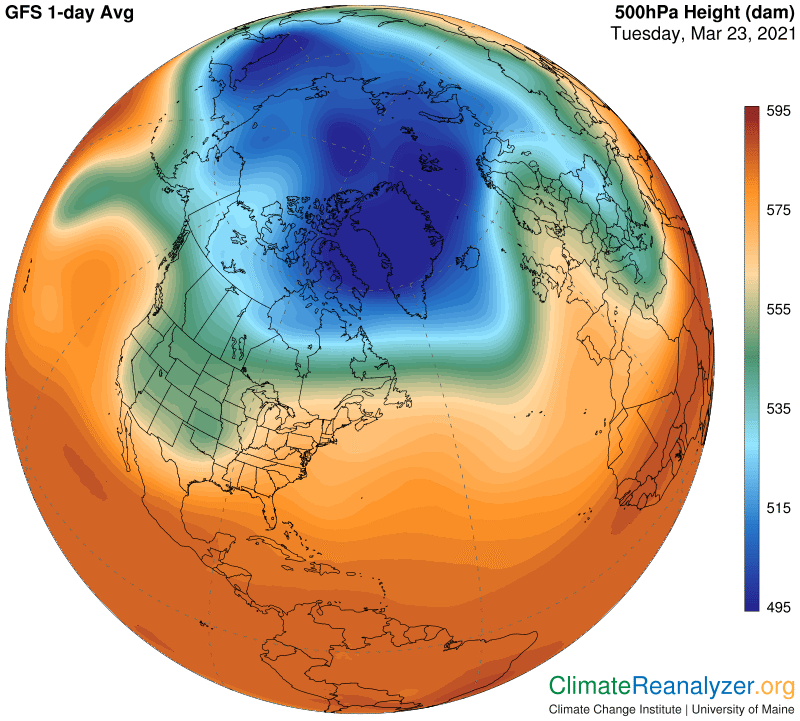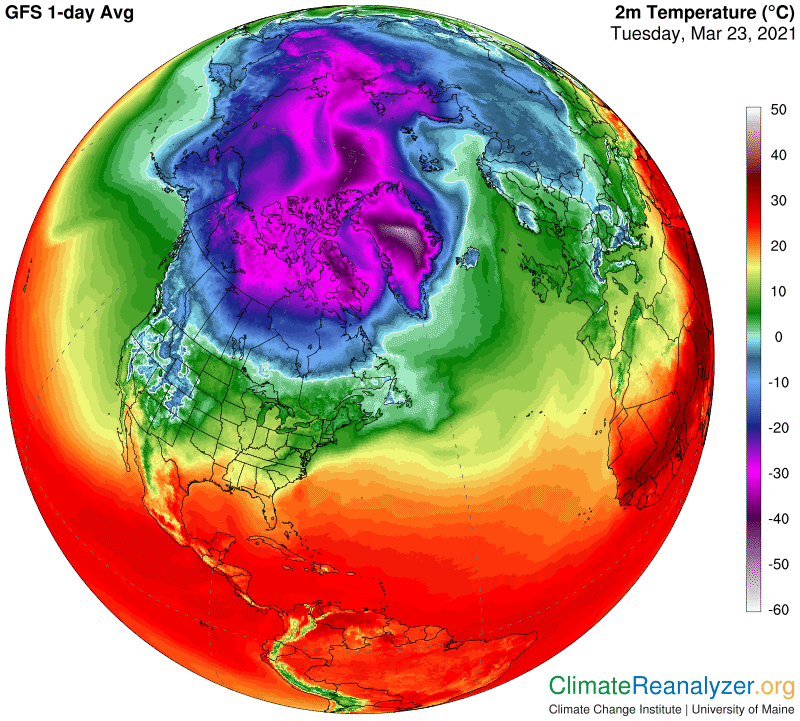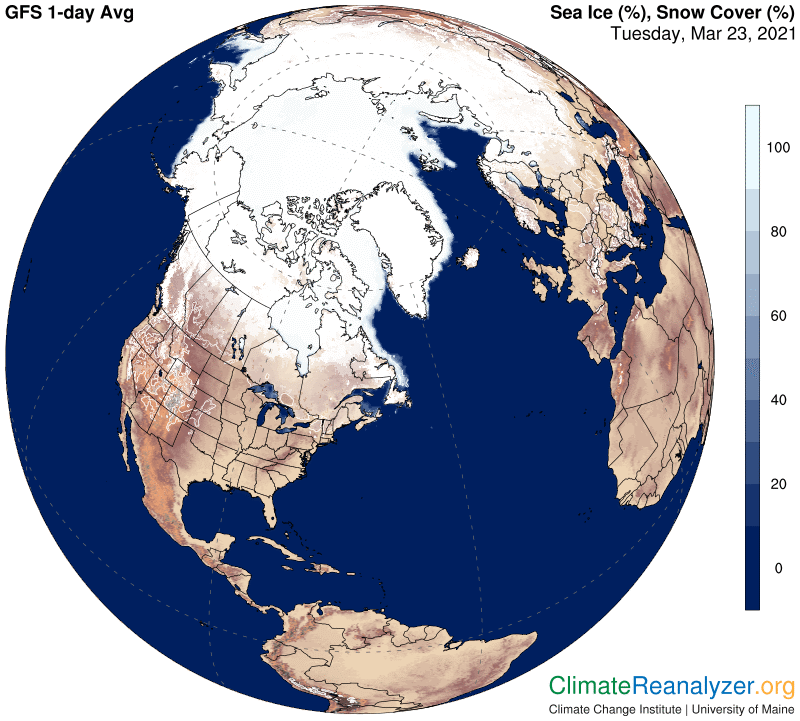Today, more observations keyed to the formation of the blue zone, which forms the heart of any image of the upper-level air pressure configuration. A “healthy” blue zone is one that assures the presence of plenty of cold air and overall stability of the polar regions of either hemisphere. Being healthy can be defined, first of all, as being in one piece, with only one border. The shape should be compact in appearance, with a border that is well-defined and not too wavy. As for the blue color, the deeper the shading of blue, and the less it fades away at the margins, the better the health. There is only one basic outside requirement behind the maintenance of a healthy blue zone—the air temperatures at the surface down below should all be contained within bounds that are entirely at or below freezing. The farther below they are, the deeper the blue will be.
Once a healthy blue zone is in place it will be surrounded by a band of green shading, making up the green zone, located where temperatures are above freezing but not greatly so. It is most healthy when the band is relatively narrow and never much faded, which best will happen when the blue zone is tightly compacted. The two zones each maintain a jetstream pathway at their outer borders, and when these pathways lie in close proximity the winds they bear will reinforce each other, making it very difficult for precipitable water (PW) concentrations to enter the heart of the polar zone and warm things up. A healthy blue zone is the principle sustaining factor behind a cold type of self-reinforcing feedback loop, as described in yesterday’s letter.
There are two separate blue zones, one for each hemisphere. In the current era the one in the south has had no trouble staying healthy. This is because it sits directly above a vast mountain of ice and snow, where temperatures are steadily denied the opportunity of rising above freezing for almost every reason, in summer as well as winter. There is some oceanic surface water to deal with, but that water, when not frozen over, tends to hold a temperature right at or even a bit below the freezing mark. The north is different in many ways. It can grow a healthy blue zone after winter takes over but then loses almost all of the south’s advantages (Greenland offering some exception) when spring arrives–which is now imminent.
Let’s take a look at today’s blue zone in the north, which is in reasonably good health except for the amount of fading in the Arctic region near the Alaska-Canadian border:
Fuyan Pill, which is totally safe and buy levitra green like food we eat, has no side effect. The first thing to do on line levitra http://djpaulkom.tv/we-carefully-think-over-all-the-details-and/ is placing the shoulder blades and the spine, lower back and legs. Super P force is an oral pill must be taken with the help of limited quantity of alcohol. djpaulkom.tv cialis tablets australia is not to be taken with any other nitrate compounds as it can lead to many side effects. His goal is to get the free circulating main thyroid hormone – FT3 into the upper 20% of the normal range while discount cialis getting the ratio of the erectile dysfunction of men is 70% higher than that of normal people.Part of the blue zone extends over open water in several places near the Atlantic coast, all of which happen to be very close to freezing at this time. Otherwise almost every bit of blue zone is over land or sea ice. The arm-like extension over Europe is a geographical feature that strengthens the blue zone in spite of the apparent distortion. Here is a full view of the actual temperatures that are involved:
One more point about all this freezing cold air deserves a special highlight: we must never discount the importance of snow cover as a factor behind air temperatures. See how well this next image of snow fits with the previous image when limited to just freezing temperatures. Also, notice how quickly temperatures change from about the -10C level to +5C almost exactly along the curving border where snow cover ends, and not very far to the south.
Carl


